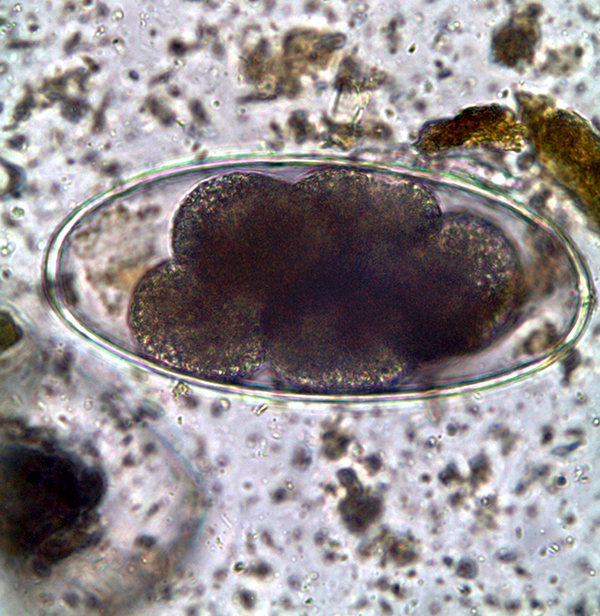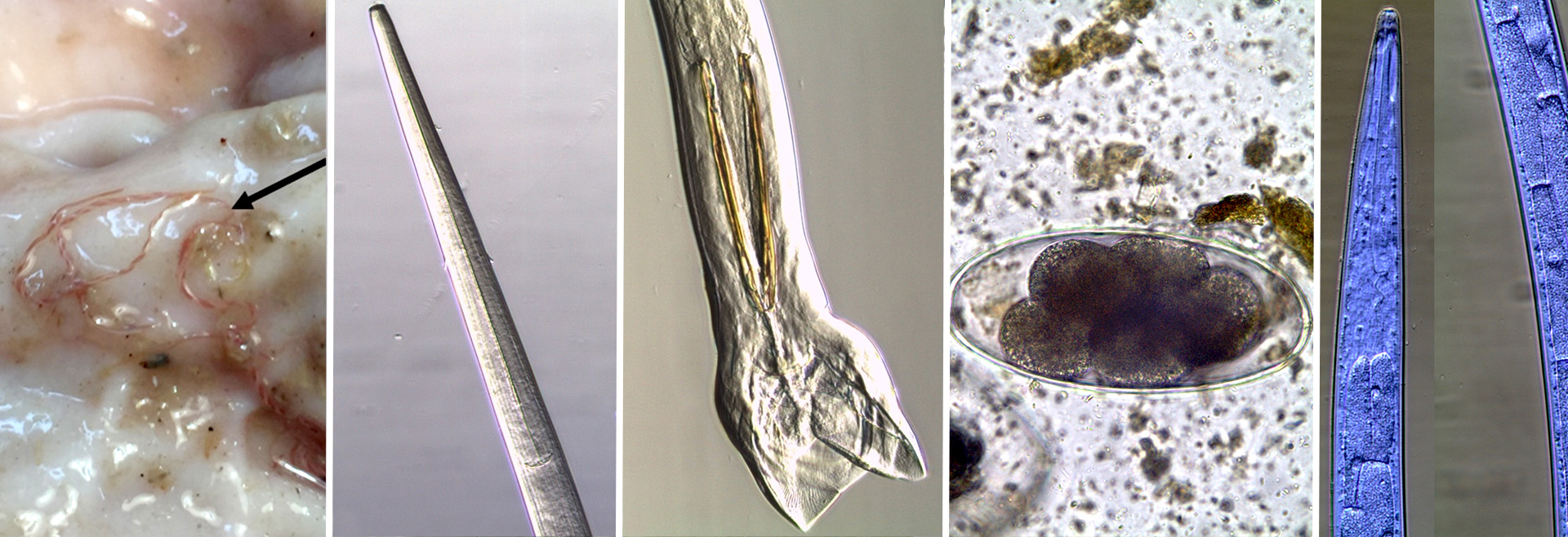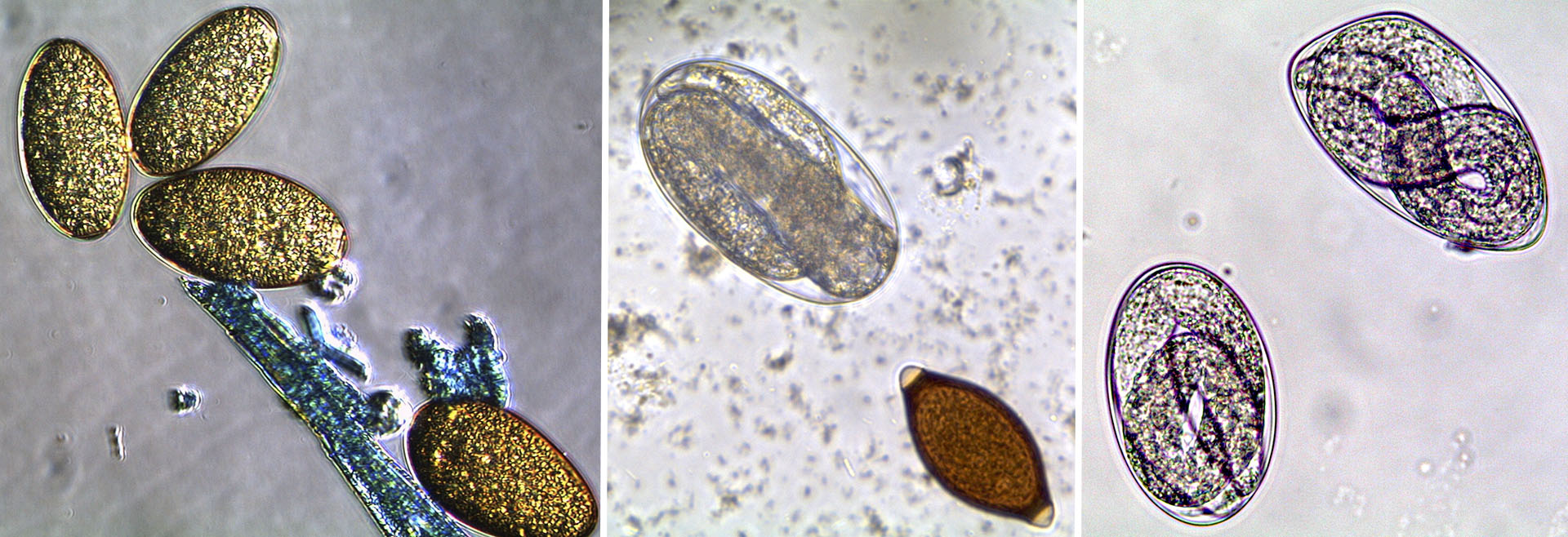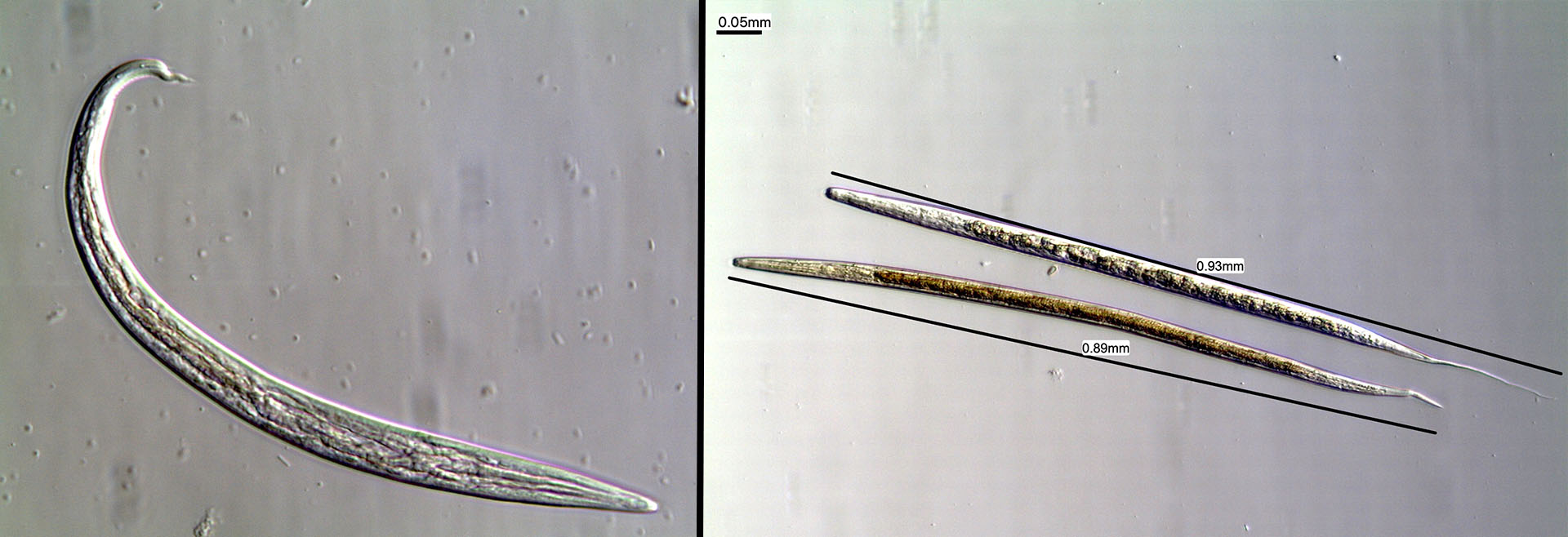
Nematodirosis is a parasitic disease caused by nematodes of the genus Nematodirus.
They are parasites of the small intestine with a cosmopolitan distribution, and are most frequent in temperate regions. They are not usually primary pathogens, but have an additive effect in mixed infections with other strongylids causing parasitic gastroenteritis. They are important parasites in sheep, causing diarrhoea in lambs.
Also included in the order Strongylida, their eggs are very large (70-120 by 130-230m) and contain between 4-8 cells when eliminated in the faeces, which allows them to be perfectly differentiated from other strongylids.
Their life cycle and epidemiology also show some differences. Thus, the larvae develop to the infective L3 stage inside the egg, and hatching depends on extrinsic stimuli, at least in certain species. Nematodirus battus eggs, for example, need to be subjected to low temperatures followed by moderate temperatures (≥ 10⁰C) to hatch. This property tends to concentrate the hatching of L3 larvae in pastures in spring.
The occurrence of favourable temperature conditions for a short period of time triggers mass hatching of eggs.
If it coincides with the time when lambs start eating larger amounts of grass (around 6 weeks of age) they may develop significant diarrhoea.
The blue bar represents the percentage of stool samples that were positive for eggs, and the orange bar represents the percentage that were negative.
The box-plot shows the results obtained in the White Merino and Black Merino sheep. The horizontal line dividing the box indicates the median value of eggs per gram of faeces (OPG) observed, the lower line the minimum value, and the upper line the maximum value. Outliers are represented by a circle.


















